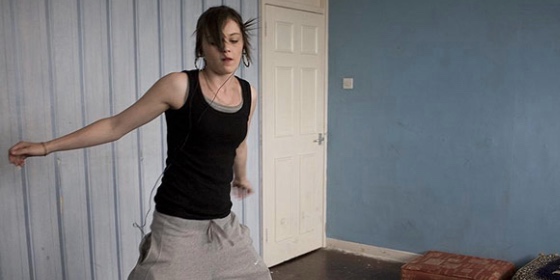
Three years ago, a group of women decided that starting a feminist film journal was a risk they wanted to take. They were willing to put their names behind something that would call out sexism, critique the industry they worked in, and do it all on the internet, a place that’s never been friendly to women who dissent. I didn’t know what to expect when we started out on the cléo path, but I do know that since 2013 that group of women has grown; it seems as though more and more of you have felt that lending your time, labour and brains to this endeavour is worth it. You felt the potential gains would outweighed the risks.
This being the tenth issue, I’ve been asked (and have asked myself) what those gains have been. Since we work outside the dominant mode of publishing, I can assure you the return on our investment hasn’t been financial. The first thing that comes to mind, then, is that over the past three volumes we’ve made space for more bylines by women and non-binary folk writing about film. (Our masthead boasts 58 contributors to date—50 are women.) Putting your name forward, attached to ideas and words that are set in “internet” stone, is inherently nerve-wracking. Putting your name forward in a field where so few women are writing is all but alienating. (In 2013, according to the Center for the Study of Women in Television and Film, 78% of the top critics on Rotten Tomatoes were male [i].) I’m still amazed when I pick up film publications and scan the contributors, noting the small percentage of women (if there are any at all). I continue to see many men fail up and keep pitching with a persistence that I can’t begin to fathom. I see women fighting to make it and not be ghettoized by their gender (only asked to be the token woman on a panel or to pen a hot take on the latest female director). But I also see more and more women making it in their careers. I see their risks paying off, and I believe that publications that don’t take risks on emerging voices will ultimately gain no rewards.
As for this issue, the editors couldn’t be happier with how our writers have explored the concept of risk. Mallory Andrews (one of the above-mentioned women who have been part of the cléo team since our first issue) explores the “female problem” in Sicario. Kelley Dong deconstructs the “dream” of the neo-liberal mother in Advantageous, and we’re pleased to have Colleen Kelsey writing for us again, this time on Catherine Breillat’s Abuse of Weakness. A recent but already integral addition to our editorial team, Kathleen Kampeas-Rittenhouse, explores attempts at escaping late-stage capitalism in Fish Tank and Two Days, One Night. Michelle Kay profiles the risk-taking career of Hollywood icon Anna May Wong, while Willow Maclay, another returning writer, discusses the role collaboration played in the making of Tangerine.
Your willingness to take risks has brought us to this milestone.
We also have an interview with Kirsten Johnson about her documentary Cameraperson (written by Rooney Hassan), a profile of Iris Ng for our Women to Watch series (by Sara Black McCulloch), and a roundtable featuring Chantal Braganza, Angelica Jade Bastién and myself on women risking revenge. Once again, we’ve been lucky enough to have Soraya Gilanni brilliantly interpret our theme with original cover art.
And now, on to volume four! I want to thank everyone who has contributed to cléo’s 10 issues. Your willingness to take risks has brought us to this milestone.
– Kiva Reardon
April 18, 2016





